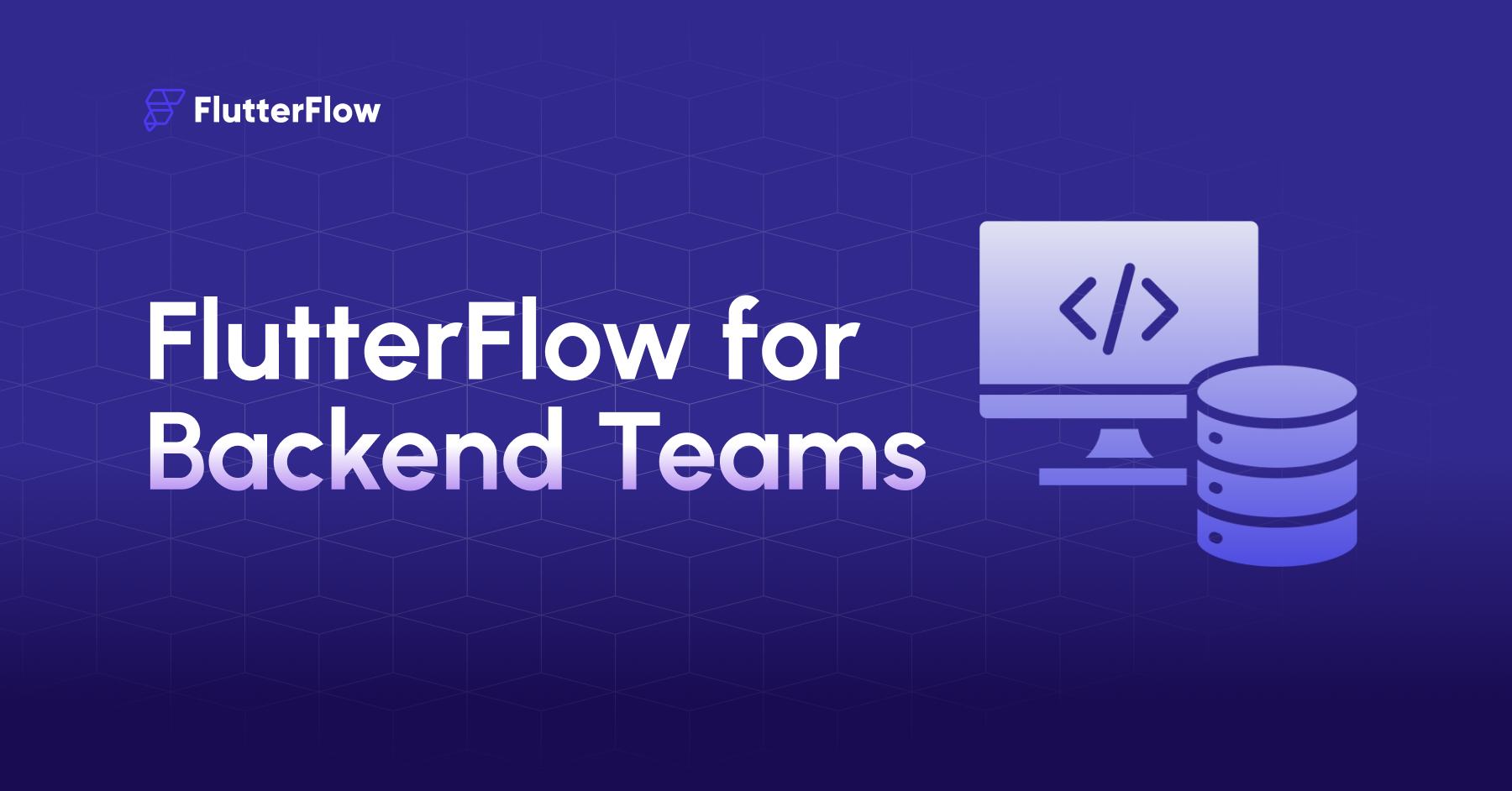In many organizations, backend engineers are expected to build robust, scalable APIs and services. Their focus is often on data modeling, authentication, integrations, and performance under load.
But increasingly, backend engineers are being pulled into product discussions and frontend workflows. They’re asked to test APIs with actual interfaces, build admin tools to support operations, or prototype new features alongside product managers and designers.
This shift is a natural result of more integrated product teams. But it also creates new challenges. Backend engineers often lack the tooling to build or validate UI flows without relying on overburdened frontend teams or writing throwaway code.
FlutterFlow helps bridge that gap.
A Practical Tool for Prototyping and Validation
FlutterFlow is best known as a visual frontend builder. But its structure, API integration support, and logic tools also make it a valuable environment for backend engineers.
Here’s how.
Rapid Prototyping Without Frontend Overhead
When backend teams want to validate a service or test an idea, they often build quick internal tools using frameworks like Flask, Rails, or Node. But even these lightweight approaches require wiring up UI from scratch.
With FlutterFlow, backend engineers can quickly:
- Create forms, lists, and dashboards to interact with their APIs
- Simulate user flows for new product features
- Preview how API responses look in a real interface
This means you can validate business logic or user journeys earlier in the process, without waiting for the full frontend team to come online.
API Integration and Real-Time Testing
FlutterFlow supports REST, GraphQL, Firebase, and Supabase integrations. You can connect to your endpoints, set headers, and map the responses directly into the UI.
For backend engineers, this means:
- You can test endpoints visually and understand how real users will experience them
- You can expose staging environments or internal services for team testing
- You can troubleshoot integrations before handing them off to frontend developers
This tight feedback loop can help reduce bugs, misaligned expectations, and late-stage integration issues.
Building Internal Tools and Admin Panels
Backend engineers are often responsible for enabling non-technical stakeholders to do their jobs. That might mean spinning up internal tools for support, operations, QA, or product teams.
FlutterFlow is well-suited for these use cases. You can:
- Build authenticated admin panels using Firebase Auth or custom logic
- Set up dashboards for tracking usage, logs, or system health
- Create custom CRUD apps for internal data management
And because these tools live in the same ecosystem, they can share components, state, and logic with your main apps.
Aligning with Enterprise Architecture
Visual tools are sometimes viewed as separate from production workflows. But FlutterFlow gives backend teams the flexibility to build prototypes or internal apps without locking themselves into a closed system.
You can:
- Export the full Flutter codebase when needed
- Extend projects with custom code blocks or logic
- Use action flows to define backend-driven interactions
- Integrate with version control and CI/CD pipelines
This allows backend teams to experiment and deliver value without compromising on architecture, performance, or maintainability.
Empowering Full-Stack Thinking
FlutterFlow doesn’t replace backend engineering work, but instead supports it. By lowering the barrier to frontend prototyping and interaction, it helps backend teams collaborate more effectively with product, design, and frontend teams.
This enables:
- Faster iteration on product features
- Better alignment between APIs and user experience
- More ownership over end-to-end delivery
For backend engineers working in fast-paced environments, FlutterFlow offers a way to be more hands-on and more connected to the user experience.
Supporting Better Collaboration
Software teams are most effective when roles are flexible, tools are accessible, and feedback cycles are short. FlutterFlow gives backend engineers a way to contribute to the frontend process without getting bogged down in setup or handoffs.
Whether you’re validating a new API, building an internal dashboard, or helping your team move faster, FlutterFlow can be a useful part of your toolkit.
Explore how your teams can move faster and smarter with FlutterFlow. Learn more about FlutterFlow for Enterprise.

